End in chess. How to play chess (for beginners)
You have probably heard that chess develops thinking, observation, the ability to assess the situation, otherwise you would not have opened this article. Sovsport. en I tried to summarize the rules of chess for beginners - if you have never played this game before, then it's time to learn. If you played a little and for a long time, then you can refresh your knowledge. If you want to teach your children, we will try to help.
THE LEGEND OF THE ORIGIN OF CHESS
If you are going to explain the rules of chess to children, then first try to captivate them with the legend of the origin of chess.
A long time ago, about two thousand years ago, when there were no iPads or even TVs, the despotic and frivolous Raja Bagram lived and ruled in India, who constantly entertained himself by fighting with his neighbors. And one of his close associates named Nazir decided to distract the ruler from the wars with a game that he invented, and at the same time show that the king means little without the support of his subordinates. In this game, on a 64-cell board, in addition to the king, infantry and cavalry, elephants and fortresses were placed and fought - everything is like in a real Bagram army, so he really liked the game. He asked Nazir what reward he wanted for his invention.
“Put 1 grain of wheat on the first cell of the board, 2 on the second, twice as many again on the third, that is, 4, on the fourth, 8, and so on, until you fill all 64 cells,” the sage answered.
“You don’t think well of my generosity! Is this a worthy reward? All right, you'll get your sack of wheat!" Bagram waved his hand.
But when the court mathematicians calculated how many grains Bagram should give to Nazir, they got a huge amount - 18,446,744,073,709,551,615! This is more than grains of sand in the largest desert of our Earth, the Sahara! After that, the raja realized how smart Nazir was, and even more respected the game that he had come up with.
PURPOSE OF THE GAME
The rules of the game of chess were refined for many centuries, but in their classical version they were established several centuries ago. The game is played on a board consisting of 64 alternating black and white cells. You need to start arranging the pieces when the board lying in front of you in the near right corner has a white cell.
There are 16 pieces in your army - a king, a queen (queen), 2 knights, 2 bishops, 2 rooks and 8 pawns. In the row closest to you, rooks are placed along the edges, then, closer to the center, horses, then bishops. The remaining two cells are occupied by the king and queen, and it is easy to remember their location by the phrase "the queen loves her color." That is, the white queen is on a white square (and the white king is on a black one), and the black queen is on a black one, leaving a white square for the black king. The second row from the players is entirely occupied by pawns.

White makes the first move. In one move, only one piece can be moved by any number of cells allowed for it. If your piece "lands" on the cell where the opponent's piece stands, then his piece "dies" and is removed from the board.
The goal of the game is to "capture" the other's king before the other's army "captures" yours. The situation when the opponent's king is attacked by any of your pieces, but can hide on an adjacent square or behind another piece, is called "check". And if he is under attack and there is nowhere for him to hide, it means you checkmate and win.
HOW CHESS PIECES WALK
To show how chess pieces move on the board, there is nothing better than to present this part of the rules of chess in pictures. But first you need to remember: according to the rules, if you took up any piece, then you must make a move to it.
King. Moves one square in any direction. An exception is castling (more on that below). You cannot lose the king, so the king can never move to the cell that is under attack by someone else's piece. If your opponent accidentally put the king on a square where he could not go, do not shout "Ha ha, I won!", but put his piece back and explain what he made a mistake.
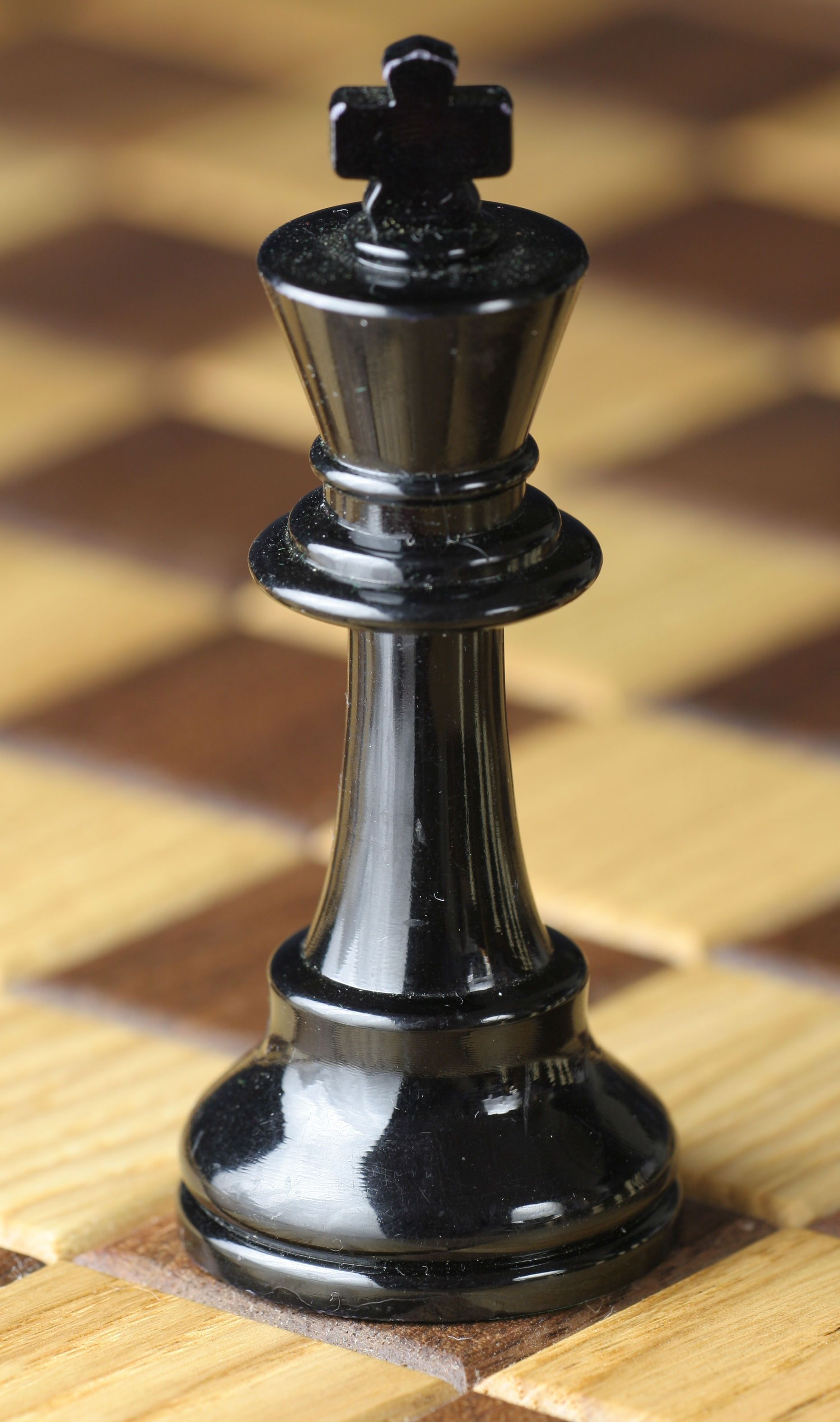
Queen. The strongest figure. Moves any number of cells in any direction.
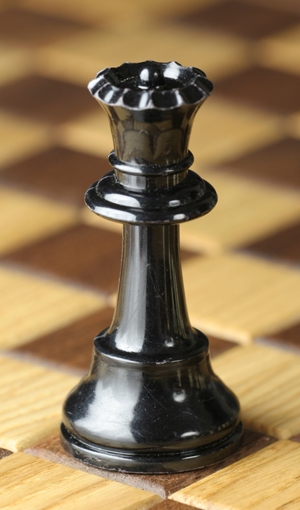
Elephant. Moves any number of cells along any diagonal. As you can see, one elephant starts the game on the cage white color(and he can never end up on black) and the other one starts on black (and never jumps over to white).
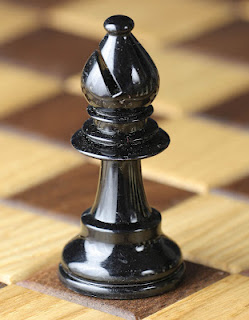
Horse. The most unusual figure moves with the letter “G”, that is, two cells in any direction, then makes a 90-degree turn in any direction and moves one more cell. At the same time, the horse is the only piece that can "jump" over others.
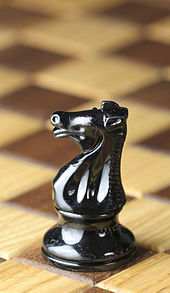
Rook. Moves in a straight line - that is, forward, backward or in any direction for any number of cells.
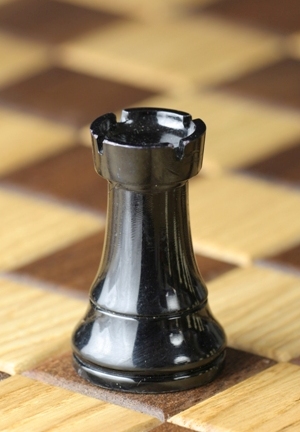
Pawn. The simplest soldiers in your army can only move forward. On their first move, they can step either one or two squares. But in the future they walk carefully - one cell and no more. But if someone else's piece is standing in front of them, then they cannot attack it. Why? Because pawns attack other people's pieces also with a one-cell step, but not directly, but diagonally!
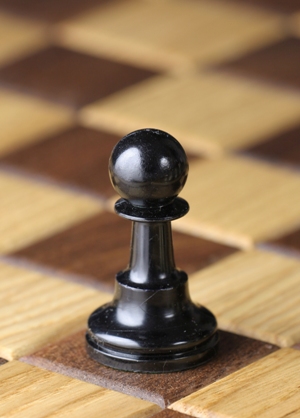
However, as often written in the rules of chess for children, the slow and clumsy pawn has a dream that she sometimes manages to fulfill. If it reaches the opposite edge of the board, it can turn into any other piece (except the king and itself, that is, a pawn). Usually a pawn is made into a queen, because, as you already know, this is the most powerful piece.
The so-called “capture on the aisle” is connected with the pawn, which we will discuss below.
SPECIAL MOVES
There are two special moves. Again, for clarity, we will explain these nuances of the rules of the game of chess in the pictures.
The first special move is called castling. If the king and rook have not yet moved since the beginning of the game and there are no other pieces between them, then they can castle. To do this, the king takes two steps towards the rook, and she "jumps" over him. At the same time, neither the cell on which the king stood, nor the cell that he crossed, nor the cell on which he stood, should be under attack by the opponent's pieces.
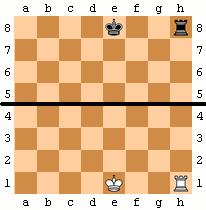
"En passant capture" refers to the pawn's first move, when it moved two squares at once. If a pawn - for example, white - stepped two squares and at the same time caught up with the opponent's black pawn, then the player with black pieces can next move his pawn to the square that the white pawn just jumped over and remove the frisky opponent from the board. But if he does not make this move right away, then in the future he can no longer claim to “eat” the white pawn.
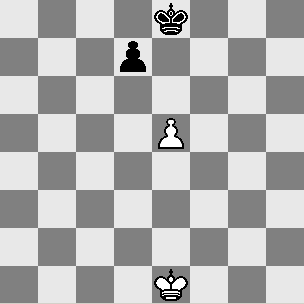
END GAME
As already noted, the game ends when the king of one of the chess players is under attack and cannot "escape" from him or defend himself with another piece. This is called "checkmate". The one who managed to drive someone else's king into such a trap is declared the winner. The party can also end in the victory of one of the participants, if the other himself declares his surrender.
If the king of one of the participants in the game is not under attack, but this participant cannot move any of the pieces, then this situation is called a “stalemate”, and a draw is declared in the match. In addition, a draw is fixed if a position is repeated three times (not necessarily within three moves in a row) or if there are no pieces left on the board sufficient for checkmate (for example, kings and one minor piece from one of the opponents, that is, a knight or bishop).
The above is enough for you to sit down to play chess - with a friend, with a child, or just with a computer program. But to play successfully, you need to take into account at least something else.First, always think: why did the opponent go this way or that way? What is he up to? If you unravel his plan, then with a high probability you will be able to find protection.
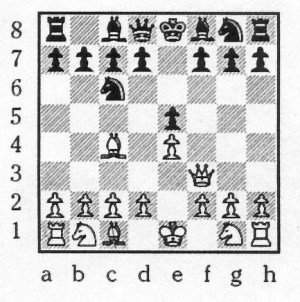
Second, try to develop your plan. For example, it makes no sense to just put "check" just to proudly pronounce this word if the opponent can easily defend against your single attack. But if you start attacking the enemy king with several pieces of your "army" at once, then this will have a much greater effect.
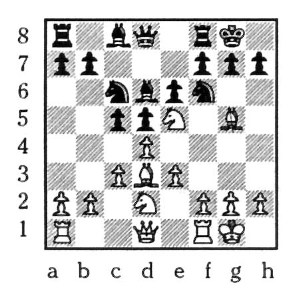
Third, know the value of each piece. It is foolish to "eat" someone else's pawn in order to immediately lose your queen. When exchanging pieces, take into account their conditional price: a knight and a bishop cost about three pawns, a rook - six, a queen - nine. The king, as you know, is priceless.
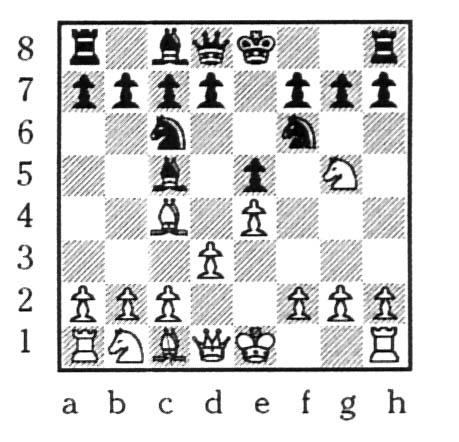
Fourth, try to control the center of the board, at least the central four squares. The pieces in the corners and on the edges are less agile, they are less involved in the game. That is why, by the way, do not delay the introduction of significant pieces into the game - you cannot win the initiative with pawns alone!
Fifth, remember that "double" pawns (that is, standing on the same line after you "ate" an opponent's piece with one of them) cannot defend each other. This is especially important at the end of the game.
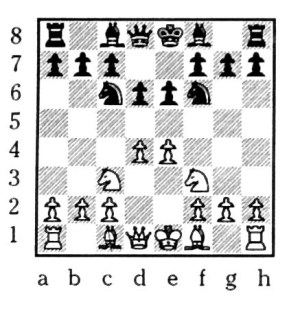
Sixth, always think about the safety of the king! No matter how confident the position of your pieces on the board looks, all this will be useless if your king is under attack and cannot avoid it.
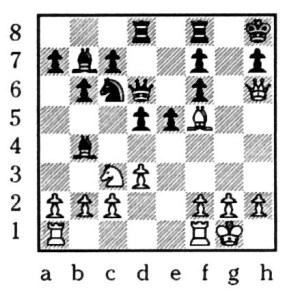
And most importantly - have fun!
Chess is played on a square board of eight rows (labeled 1 to 8) and eight columns (labeled A to H). The board consists of 64 usually black and white fields. Chess is played by two players, the pieces of the opponents are placed on opposite sides of the board. At the beginning, each player has 16 pieces from the bottom: 1 king, 1 queen, 2 bishops, 2 knights, 2 rooks and 8 pawns. The player who plays with white pieces starts the first move, making moves in turn, moving the pieces to free places or to those occupied by the opponent, capturing his piece, thereby removing it from the playing field. The goal of the game is to checkmate the opponent's king (put MAT). There are several situations of interaction with the king - SHOW, MAT and PAT.
SHAH- this is a situation when the king is under attack by the opponent's pieces, but can escape from the attack to another field or cover the king from the opponent's attack with his piece.
MAT- this is a situation when the king does not have the opportunity to get away from the SHAH. Such a move in the game leads to its end.
PAT- this is a situation when the king cannot make a move on the next move, that is, move to a field that is not attacked by the enemy. This situation in the game leads to a draw, such a rule finally came into force in the 19th century.
All pieces move differently, with the exception of the knight, all other pieces cannot step over pieces, and pieces cannot stand on the squares occupied by pieces of their color. When making a move, as a rule, the pieces should be positioned in such a way as to threaten the opponent's pieces and protect your pieces, as well as control important fields for you.
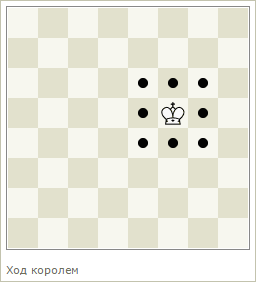 |
King is the most important piece on the field, at the same time the weakest one, he can only move one square in any direction, but not on those squares on which he will be under SHAH. |
 |
Queen the strongest piece on the playing field, it can move in any direction and at any distance, but cannot step over the pieces. When capturing an opponent's piece, the queen's move ends on it and takes its place. |
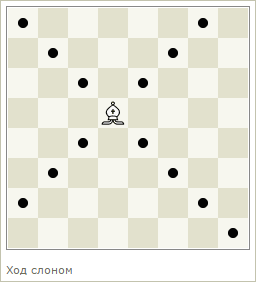 |
Elephant can move to any number of fields only along the diagonal. The peculiarity of this figure, each of them is controlled by its own color of the fields (black or white) |
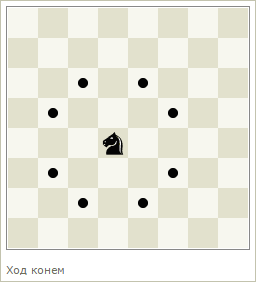 |
Horse a special piece that makes a move not by analogy with other pieces. The knight moves according to the principle of the letter "G" and always moves from a white field to a black one. This is the only piece in chess that can jump over an opponent's piece or a piece of its own color. |
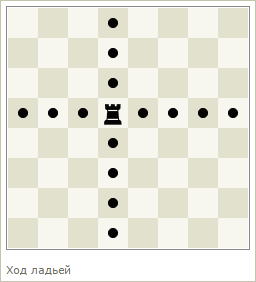 |
Rook can move to any number of fields horizontally and vertically, they are especially strong when working in pairs |
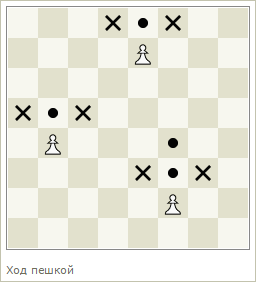 |
Pawn the simplest piece at the same time and the most versatile, having reached the opposite side, it can turn into any piece except the king. A pawn moves only one space forward vertically, except for the first pawn move, it can move two spaces forward. A pawn can capture an opponent only diagonally one square to the left or right |
There are also special moves in chess, such as Capture on the way and Castling.
Taking on the way this is another rule associated with pawns, namely the capture of an opponent's pawn that has moved two squares forward. But under attack is not the square on which the opponent's pawn made a move, but the one that was crossed by it. The pawn completes its move exactly on this crossed square, as if the opponent's pawn moved one square forward.
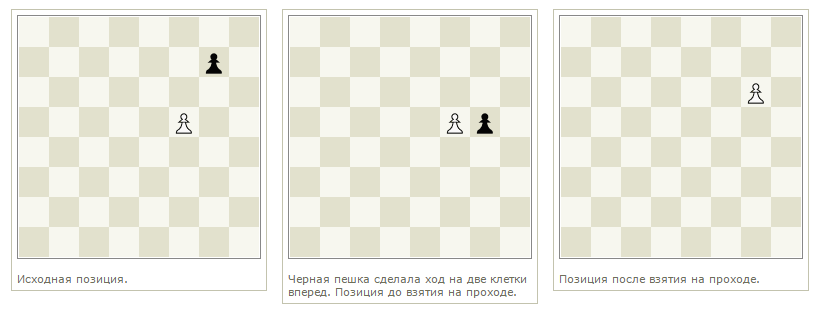
Castling one more special rule. This move can do two important things. This is to secure the king and the second to get the rook out of the corner. The action consists in moving the king towards the rook of its color (regardless of which, it is possible to the left and right) two squares and then moving the rook to the adjacent square from the king on the other side. Castling is also possible only if the following rules are observed:
- These should be the first moves of the king and rook pieces;
- The fields between the figures must be free (empty);
- The king should not be under the SHOW, also in the square where the move is made.
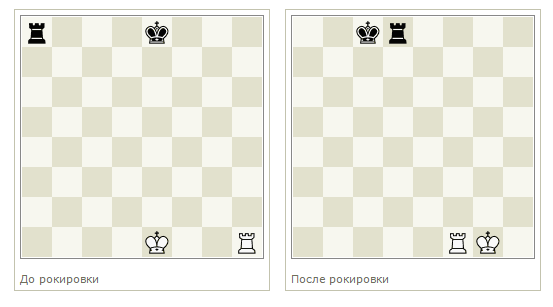
It also happens in Chess that there is no winner, that is, a draw. There are several rules by which the game ends in a draw:
- Not enough pieces on the board to checkmate the opponent
- PAT has already been described above, and also when a player with the right to move cannot use it
- By mutual agreement, the players can agree on a draw and finish the game
- Also, a draw is declared when a player makes three moves repeating the same positions, not necessarily three moves in a row.
- With fifty moves during which they did not move a pawn more than once or did not capture any piece
And from this article you will learn how it is allowed to behave ordinary soldiers of the chess army- chess pawns. Eight white and eight black pawns - there are many of them, but they are the weakest. True, if the pawns come together and start moving, then the strongest chess pieces will not be able to cope with their avalanche. For every small pawn as many as five rules of movement on the board. Let's put some white and black pawns on the chessboard and consider the rules below.
Chess pawn moves
Rule 1 (how pawns move)
Little chess pawns move
1) vertically, 2) forward, 3) per cell.
White moves from the 2nd to the 8th rank. Black pawns to meet them - from the 7th to the 1st.
White's moves are written on the left, and Black's moves are written on the right.
1. e5–e6 h4-h3
2. e6-e7 h3-h2
Rule 2 (first move)
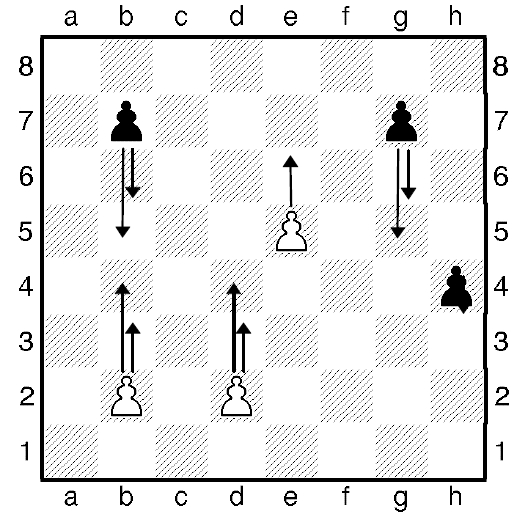 If the pawns have not yet moved and are on the 2nd (7th) rank, then they can make their first move either one or two squares (through a square).
If the pawns have not yet moved and are on the 2nd (7th) rank, then they can make their first move either one or two squares (through a square).
1. b2-b4 b7–b5
2. d2-d4 g7-g5
3. c2 - c4 c7 - c5
All pawns can move two squares!
The letter "P" (pawn) is not written before the move!
Now attention! Pawns often run into each other (for example, pawns e7 And e6). The rook, king and queen would have made a capture, but the pawns, both white and black, would remain facing each other until the path in front of it was cleared.
If a pawn meets someone on its way, it cannot move further.
Rule 3 (captures)
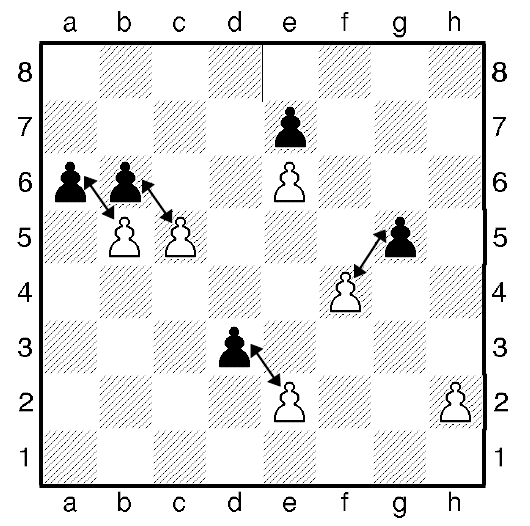 Pawns strike forward obliquely (diagonally) for one cell.
Pawns strike forward obliquely (diagonally) for one cell.
Look at the white pawn on e2 and the black pawn on d3. When White moves,
1. e2:d3,
and when black moves
1. . . . d3:e2.
When recording chess moves, three dots after "1" indicate that it is now Black's move.
The same captures can be made by other pairs of pawns: a-b, b-c, f-g.
Look at the pair b5 and b6. These are the encountered pawns. But now they have the opportunity to move forward with the capture.
Chess soldiers-pawns boldly go forward. Let's ask them: "For what?"
Going on a journey, every soldier dreams of reaching the end and becoming a general. Of course, the pawn dreams of becoming a queen, but it can also wear not so “high” shoulder straps. For this feat, the pawn is given the rank it wishes. Look at the diagram. Any pawn can advance its rank.
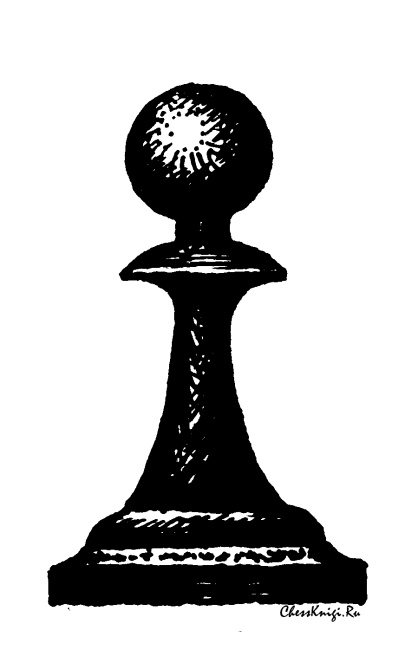
Rule 4 (pawn promotion)
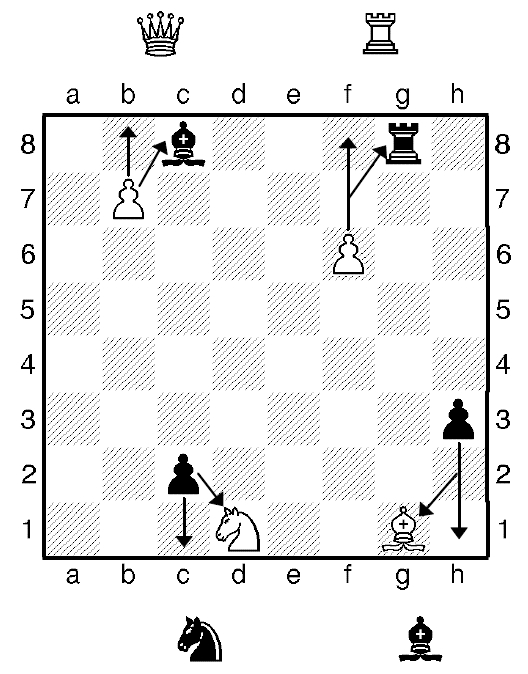 When a pawn reaches the last rank, it turns into any piece of the same color, except for the king.
When a pawn reaches the last rank, it turns into any piece of the same color, except for the king.
In this case, the pawn is removed from the board, and a new piece takes its place.
1. b7 – b8Ф c2 – c1C
(b7: c8K) (c2: d1K)
2. f6 – f7 h3 – h2
3. f7-f8C h2-h1K
(f7: g8Л ) (h2: g1С )
After recording the move, we denote the piece into which the pawn has turned.
Pawn b7 went to b8 - queen. ----> b7 - b8 F
Pawn c2 captures on d1 - horse. ----> c2:d1 TO
How many queens of the same color do you think can be on the chessboard at the same time? It turns out that 9 (pawns and one more friend can turn into 8 queens. Have you forgotten about it?).
Capturing a pawn on the aisle
Rule 5 (Capture of an aisled pawn)
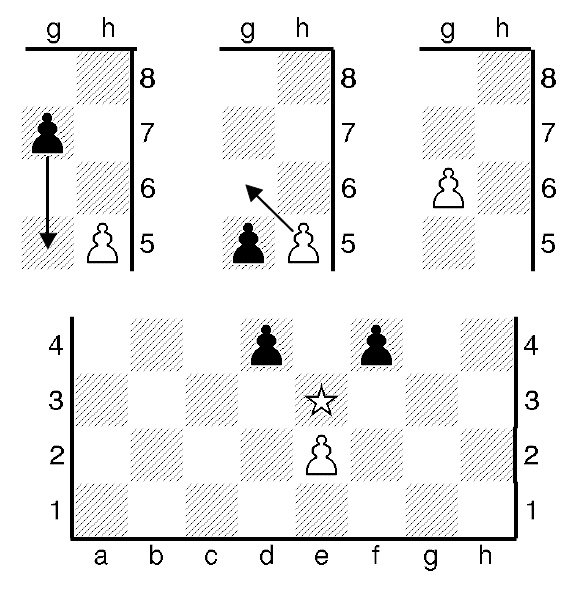 If a pawn on the 2nd (7th) rank moves to two squares at once and passes through a square attacked by a pawn of a different color ( "broken field"), then the latter can beat it.
If a pawn on the 2nd (7th) rank moves to two squares at once and passes through a square attacked by a pawn of a different color ( "broken field"), then the latter can beat it.
The rule is only valid for one turn.
The top half of the diagram shows how a pawn is captured en passant.
1st part - the pawn is on the 7th line and wants to go to two squares at once:
1. . . . g7-g5;
2nd part - the white pawn wants to capture the black one;
3rd part - what happened after taking:
2. h5:g6;
At the bottom of the diagram you see "broken field" e3, which the white pawn overcomes e2, and a couple of "hungry" black pawns d4, f4 dreaming to eat her. White is not recommended to move:
1. e2-e 4 since black pawns d4 And f4 may take en passant: 1. . . . f4:e3 (d4:e3).
Vsevolod Viktorovich Kostrov
Ask a question or Leave a comment
Chess is an incredibly interesting, addictive game that requires skill and strategic thinking. For centuries it has been popular with intellectuals and scientists; however, it doesn't take a genius to play chess - even children can play and do it well. You will still be saying "checkmate!" after reading this guide, starting with step 1 below.
Steps
Understanding the game, board and pieces
-
Learn the types of figures and how each of them walks. Each figure has its own characteristics of movement. Below you will see the names of the pieces and how each of them moves (apart from a couple of exceptions, which we will return to):
- Pawn: most base figure in the game (you have 8 of them). On her first move, she can move forward one or two squares, but after that she can only move forward one square at a time. Pawns can capture pieces that are one square diagonally ahead of them, and they cannot move backwards.
- Rook: looks like a tower. Can walk horizontally or vertically to any number of cells. Can capture pieces at the end of its turn.
- Horse: looks like the name and is the most ingenious figure. Moves with the letter "L" two squares horizontally and then one vertically, or one square horizontally and two vertically in any direction. The knight is the only piece that can jump over other pieces. He can take only those of them that are on the last cell of his turn.
- Elephant: moves only diagonally, but can move along them for any number of cells. Looks like a bishop's headdress.
- Queen: the strongest piece (usually with a more feminine crown). It can move to any number of squares horizontally, vertically, or diagonally and capture in any of these directions.
- King: can move or take pieces one square away from him in any direction. This is a piece that cannot be given away for any price, as this will mean losing the game.
- Remember, each figure has a relative value. The king is the most valuable and must be protected. The queen is the most versatile piece, which is great for protecting the king. Knights are great for surprise attacks, while bishops are often overlooked by inexperienced players. Rooks are strong long-range pieces. Pawns may seem small, but they are great to sacrifice in order to capture a stronger piece.
-
Get the gist. In chess, you are trying to capture your opponent's king, and he is trying to capture yours. This is the main goal, the second most important, obviously, is to protect their king. To do this, you need to destroy as many opponent's pieces as possible. When you attack the opponent's king, but he can get away from the attack, he is "in check". If you attacked the opponent's king, and he cannot leave, then checkmate is here, which means your victory.
- Chess is a game of intelligence and strategy. There are many moves and rules that beginners will not be able to immediately anticipate and understand. Be patient! As you play, it will get more and more interesting.
-
Set the board. Now that you know how each piece moves, you can arrange them on the board. Position it so that each player has a light square on the bottom right. You need to arrange the figures as follows:
- Place all the pawns on the second row in front of you so that there is a wall of pawns between you and your opponent.
- Place each rook in a corner on your side of the board.
- Place a knight next to each rook and a bishop next to each knight.
- Place the queen on the left square of the remaining two squares according to its color (the black queen should be on the black square, the white queen on the white one).
- Finally, place the king on the last remaining square. Make sure your partner has the same formation.
-
If you're serious, consider learning the names of the verticals and horizontals. Each field on the board corresponds to a letter and a number. In cases where someone says something like, "knight on C3," that C3 is part of the system; it makes pointing to a particular cell much easier. Here's how it works.
- Verticals are columns of cells, they look like longitudinal lines. Starting from the left, they are called A-H.
- Contours are rows of fields, they look like transverse lines. Starting from the bottom, they are numbered from 1 to 8.
- The verticals in the title come first. Your rooks, for example, are on A1 and H1.
Game in practice
-
White moves first. It happens in the following way. They choose a piece they want to resemble and attack, playing the opening. They make a move and Black responds. The opening is one of the most important stages of the game. There is no "correct" way to play it - everyone has their own style. Find yours too. However, there are a few things to keep in mind:
- Do not rush to attack immediately. In the opening, you simply look for the most comfortable positions for your pieces. You would like them to be in good and safe fields.
- As a general rule, you shouldn't make more than two pawn moves. Then pay attention to the stronger pieces - bishops, knights, queen and rooks. "Development" (drawing pieces from their original positions) does not end until each piece has made a move.
- Much in the opening will depend on the opponent - you should carefully look at his game. So watch and try to understand what he wants to do. This game has foresight like nothing else.
-
Connect the rule en passant ("to take on the aisle"). If you want to use it, here it is. Although many beginners do not worry about this. But if you're wondering how to make the game more French and challenging than it already is, this rule applies like this:
- If you remember, your pawn can advance two squares on its first move. Let's say you do this, stopping next to your opponent's pawn. On the next and only next move, your opponent can take your pawn. en passant. Normally, the pawn only captures obliquely, but in this single situation it can capture en passant (literal translation) and move one square diagonally in the process, as usual.
- Again, this can only happen immediately after the pawn moved like two squares on its first move. If the moment has passed, then the possibility of such a maneuver is lost.
-
Take turns. And let there be a game! Alternate moves with your opponent, trying to get to the enemy king and eliminating the pieces that will get in the way. If you capture your opponent's queen or put your opponent on the defensive, you'll feel great, but there are plenty of other ways to win.
- It may seem that the pawns are just getting in the way, but do not rush to sacrifice them. If one of them goes to the opposite edge of the board, it turns into any other piece (except the king)! Usually people put the queen, but you can promote a pawn into something else. If you promote a pawn with the connivance of your opponent, this will greatly affect the course of the game.
-
Always think one step ahead. If you put your horse here, what will happen? Will you expose him to the attack of the opponent's pieces? Do you have time to attack, or does your king (or even queen) need protection? What opportunities lurk in your opponent's territory? Where will the game turn in the next few turns?
- This is not a game where you can mindlessly move pieces back and forth - they all affect each other in one way or another. Otherwise, your own pawn will stand in the way of your bishop, the king will be protected only by the knight, and your opponent's rook will be ready to attack your queen, unless you do something about it. Therefore, plan your moves and, if possible, anticipate your opponent's moves.
- Whenever possible, take countermeasures. You may well substitute a pawn for the attack of the opponent's bishop, if the next move you take it with the knight. Sometimes you have to make well-planned sacrifices.
-
Learn to castling. Remember the "some exceptions" we mentioned when describing the moves of the pieces? So, in addition to taking en passant pawn, there is also castling. This is when your king and rook switch places - this covers the king and brings the rook out, killing two birds with one stone. This is very, very helpful.
- With one nimble move (and castling is one move), you move both the king and the rook at the same time. When castling right (which is more common), your king moves two squares to the right, and your rook moves two squares to the left. When castling to the left, the king moves two squares to the left, and the rook moves three squares to the right.
-
Check your opponent's king. In a situation where you could take the opponent's king next move, but he can save, the king is said to be in check. When this happens, say "check" out loud. Your opponent then has the following options:
- He can leave the king
- He can place his own piece between the piece threatening check and the king.
- He can take the piece that has declared check
- This is good. This is very good. This forces your opponent to defend his king, which means he won't attack himself. You want your opponent to defend as much as possible.
-
Win the game by checkmate the opponent's king. This means that you give the opponent's king a check from which he cannot escape. When this happens, enthusiastically say "checkmate!" In this case, the opponent puts his king on the board, which signals his defeat. Boom!
- Sometimes a stalemate situation occurs - in this case, the game ends in a draw. It's when you can put your king in check here, here, and here, and you walk around the room for minutes looking for other opportunities. Another possibility is only to put the king under check after all. In this case, the game ends with a stalemate.
General strategy
-
Use all your shapes. Sounds pretty logical, right? But one of the biggest mistakes newbies make is that they only use some of their shapes. When this happens, the rest of the pieces only begin to interfere and are easily destroyed by the opponent. So breathe life into the board, keep your opponent on guard and use your entire army.
- In the opening, move a few pawns one or two squares forward, and then start moving with the other guys. This will allow you to bring out more pieces from the first rank and they will easily enter the game, adding to your potential for attack.
-
Control the center. Since pieces can move in different directions from there, control of the center is more important than the flanks. When you dominate in the center, your opponent has a lot less safe, good fields for their figures. His strength drops a lot if he can only play left and right. Therefore, capture the center as quickly as possible!
- That is why so many people start the game with the moves of the central pawns. Just make sure you don't put your king in checkmate from a well-placed bishop!
-
Don't give away your pieces for no reason. And that's understandable, right? If you must give away a piece, exchange it for something. But never give it away thoughtlessly - they are all valuable, whether you realize it or not. If you are interested, each figure can be roughly estimated in points. The more valuable the figure, the large quantity points it is estimated:
- Pawns - 1 point
- Horses - 3 points
- Elephants - 3 points
- Rooks - 5 points
- Queens - 9 points
- Kings are infinitely valuable for obvious reasons.
-
Protect your king. Again a big banality, unfortunately. If you don't do anything else and don't really like to attack, then you simply have to protect the king. Hide him in a corner with castling, give him some good bodyguards, and start destroying your opponent's forces with your pieces. You want your opponent to start thinking about running away instead of attacking, and the sooner the better.
- On its own, it can do little; therefore, he almost always needs the support of one or two pieces to defend himself. In all cases, play the pieces carefully and keep them on guard for the king.
- The central four fields are best places for your pieces, since they have more room to maneuver in the center of the board than on the edge. By increasing the number of your moves, you also limit your opponent's options.
- Always remember that it is important to have advanced pieces in the center of the board. But the more pawns left behind, the easier it will be to defend the king.
- Make sure you pay close attention to your opponent's moves. They will affect your moves, but not the plan you want to implement.
Warnings
- Rapid chess is not for beginners. They are complex, competitive, and create insecurity for beginners.
- Chess pieces can be dangerous to small children if swallowed.
Lesson 5
Lesson 5 Queen, king.
So, for a snack we have the most interesting.
.
The queen is the most powerful chess piece. The nominal value is 10 points.
As Cardinal Richelieu said, playing chess with D'Artagnan: "This is the queen, she moves as she pleases ...". The cardinal was essentially right, except that "queen" is not the correct name. This figure is called "Queen". But that's what the storyline demanded...
The queen moves in all directions vertically and diagonally for any distance. That is, he has the capabilities of a rook and a bishop at the same time. Can NOT jump over pieces. Schematically indicated in the diagram below.
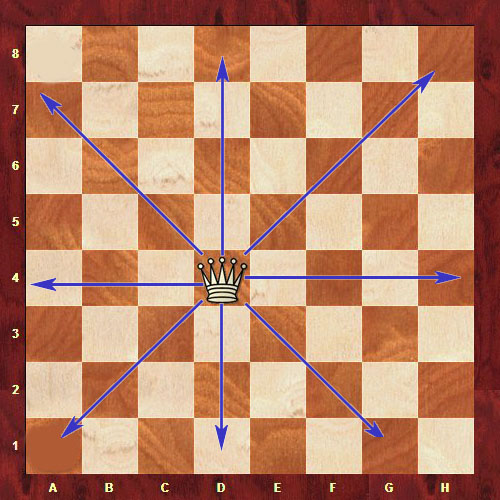
The importance of the queen is hard to overestimate. He is very effective both in defense and attack, very mobile and strong. The only negative that is associated with the queen is that it must be protected from attacks. For example, in the position in the following diagram, the white queen can attack one of several black pieces: a knight, a bishop, and a pawn. However, all these pieces are protected by the black queen. If the white queen decides to hit either of them, the black queen's next move will hit the white one. And any such exchange will be disadvantageous for White, because he will lose his strongest piece, and take a piece of lesser value for it.
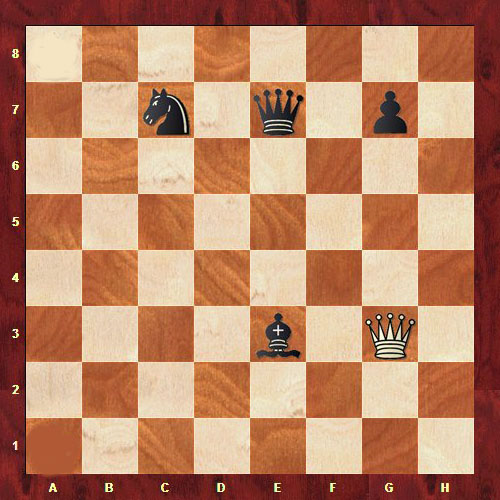
Swapping a queen, say, for a knight or bishop is almost always not profitable. Equally, the queen can be exchanged only for the opponent's queen, or for several pieces at once. Although there are times when chess players give away the queen on purpose to achieve some task. But more on that later. For now, you need to realize that the queen should be protected and used rationally as your strongest weapon.
King.
King is the most important figure. It has no face value. It cannot be exchanged, kept under attack by the opponent's pieces. It requires constant protection. But this is not because the king is too weak as a piece, but because if he dies, then the game is lost for the player.
On the other hand, the king can also move and capture the opponent's pieces. At the end of the game, when there are an order of magnitude fewer pieces on the board, and there are not so many direct threats to the king, its strength is estimated approximately as the strength of a minor piece (knight or bishop).
The king, like the queen, walks and strikes in all directions vertically and diagonally, but only on one cell.
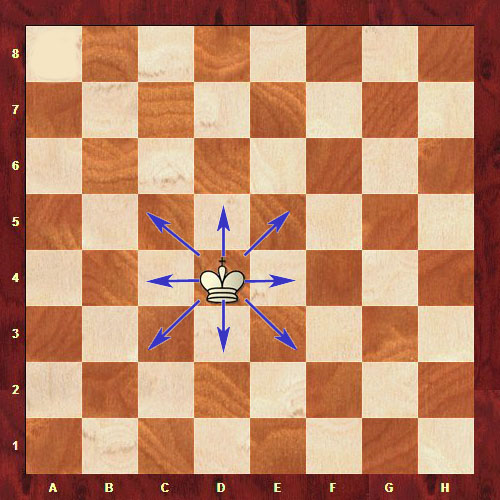
That is, being in the middle of the board, the king breaks through 8 squares.
Now you know how chess pieces move and strike. To remember each, you need to practice. In order for this practice to be quick and fun and at the same time effective, I suggest playing the so-called "Chess Labyrinth":
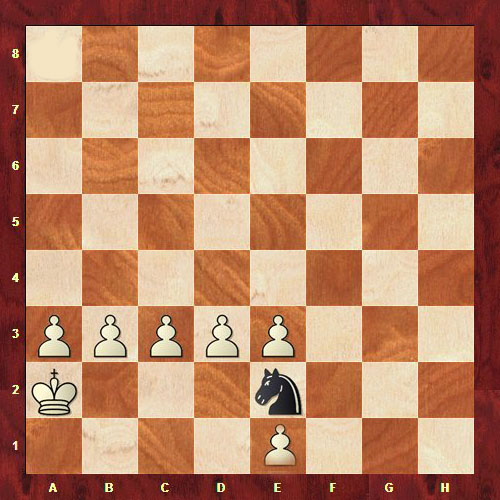
The scenario is as follows: the white king is you. Pawns are the walls of your house. They cannot be moved. The black horse is a guest to be greeted. In other words, it is necessary to reach the knight with the king. How the king walks, I think you remember.
In essence, everything is simple, the king reaches the knight one square at a time, but not quite ... You have a lot of furniture at home that prevents you from reaching the guest. For example, like this:
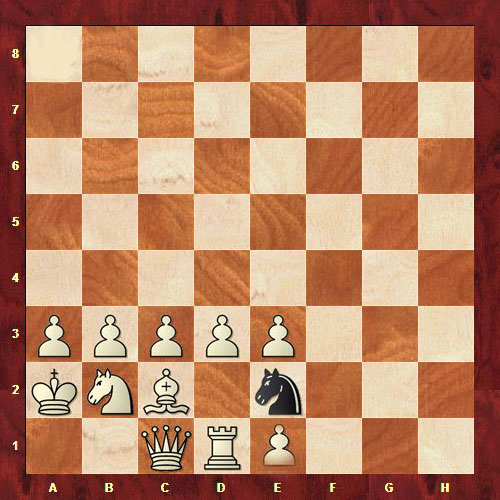
Furniture must be moved to clear a path. Thanks to this game, you can quickly remember how each piece of this "furniture" moves :)
Make it difficult for yourself until there is very little space left in your house. For example, like this:
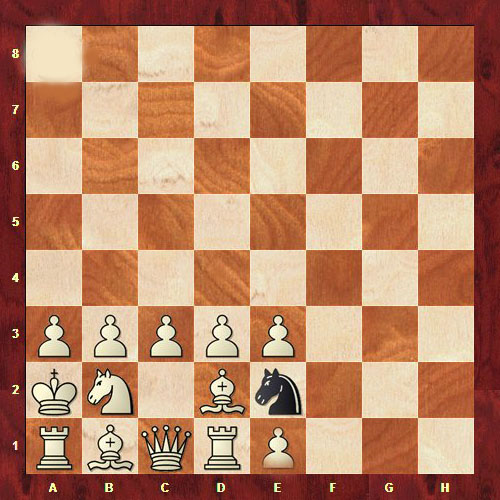
1-2 hours a day, approximately 1-2 days depending on your personal characteristics. I'm sure you won't forget how the pieces move after that.
Now that we know how the pieces move, it would be great to determine what to do with them, that is, to find out the goal of the game. About this in next lesson.
